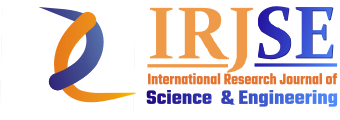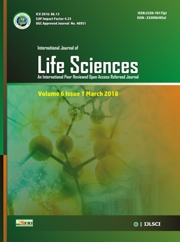RESEARCH ARTICLES
Volume 8 |Issue 3| May-June 2020 First published: 30 June 2020
A comparative evaluation of fungicides and plant leaf extracts against the fungi associated with seeds of pulses
Nagpurne Vinay S
Department of Botany, Maharashtra Udayagiri Mahavidyalaya, Udgir Dist. Latur, Maharashtra, India
For correspondence Email: vinaynagpurne@gmail.com
Abstract
Keywords:Wild plant, Plant leaf extracts, Chemical fungicide, Seed borne fungi, Pulses seed, In vitro evaluation.
Editor: Dr.Arvind Chavhan
Cite this article as:
Nagpurne Vinay S. A comparative evaluation of fungicides and plant leaf extracts against the fungi associated with seeds of pulses, Int. Res. Journal of Science & Engineering, 2020, Volume 8(3): 115-119.
Copyright
Open Access This article is licensed under a Creative Commons Attribution 4.0 International License, which permits use, sharing, adaptation, distribution and reproduction in any medium or format, as long as you give appropriate credit to the original author(s) and the source, provide a link to the Creative Commons license, and indicate if changes were made. The images or other third party material in this article are included in the article’s Creative Commons license, unless indicated otherwise in a credit line to the material. If material is not included in the article’s Creative Commons license and your intended use is not permitted by statutory regulation or exceeds the permitted use, you will need to obtain permission directly from the copyright holder. To view a copy of this license, visit http://creativecommons.org/ licenses/by/4.0/
References
1. Ahlawat I.P.S., Sharma Purushottam, Sing Ummed. Production, demand and import of pulses in India. Indian Journal of Agronomy, 2016; 61(4th) 533-541.
2. Andge R.B., Parate R.L., Sawai H.R. and Kalaskar R.P. In vitro studies on management of collar rot caused by Aspergillus niger in groundnut soil crop, 2017; 27(1): 80-83.
3. Bari. Annual Report 1985/86, Plant pathology Division, BARI, Joydebpur, Gazipur, Bangladesh, 1986; Pp-119.
4. Islam S.M.M., Masum M.M.I., Fakir M.G.A. Prevalence of seed borne fungi in sorghum of different locations of Bangladesh, Scientific Research and Essay, 2009; 4(3): 175-179.
5. ISTA. International Rules for Seed Testing. International Seed Testing Association (ISTA), Seed Science and Technology, 1996; 24 Supplement, Zurich, Switzerland.
6. Nine Y.L. Opportunities for research on diseases of pulses crops. Indian Phytopathology, 1986; 39 (3): 333-342.
7. Ofuya Z.M., Akhidue V. The role pulses in human nutrition, A review J. Appl. Sci. Environ Mgt., 2005; 9 (3): 99-104.
8. Pal M. Pulse diseases scenario. Indian Phytopathol, 1996; 49(2): 129-131. London Pp-859.
9. Pawar B.T. and P.B. Papdiwal. Antibacterial activity of some leaf extracts against Xanthomonas compestris P.V. Mangiferae indicae. An International Journal of Plant Protection, 2010; 3 (1): 104-106.
10. Petkar A.S., P.G. Utikar and B.B. More. Control of collar rot of double bean causing by Macrophomina phaseolina, Mysore J. Agric. Sci., 1997; 11(1): 63-65.
11. Salam M.A. Mycoflora of stored chickpea seeds and their control M.S. Thesis, Dept. of Plant Pathology, A.A.U., Mymen Singh, 2004; Pp-73.
12. Singh S.N., N.I. Singh. Seed mycoflora of broad bean and its control. Indian Phytopathology, 1986; 39 (4): 541-543.
13. Vincent J.M. Distribution of fungal hyphae in the presence of certain inhibitors, Nature, 1947; 150: 850.
14. Wani A.H., Kuruchache V.A. In vitro inhibitory effect of fungicides and botanicals on seed borne fungi. Int. J. Bipest, 2004; 4(1): 53-55.
15. Suryawanshi A.P., Patil A.C., Anbhule K.A., Hurule S.S., Raner R.B. Effect of seed dressing fungicides against major seed borne fungi of sunflower. Int. J. Curr. Microbiol. App. Sci., 2018; 6-2521-2526.

